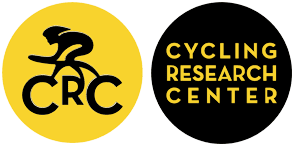The effect of exercise mode on salivary IgA secretion in high level triathletes
Abstract
Background: It is widely accepted that exercise of either long duration or high intensity can have suppressive effects on the immune system. However, it remains to be identified if exercise mode plays a part in the deterioration of immune function.
Purpose: The objective of this study was to determine if exercise mode played a part in the acute immune responses to exercise.
Methods: Eight male high-level triathletes [Age mean 32.8, s = 2.4, VO2max ml.kg.minˉٰ mean 72.6, s = 2.4] performed a 2-hour bout of exercise at 55% of their peak power output (watts) [mean 192.5, s = 4.5] on both a treadmill and cycle ergometer, each separated by seven days. Saliva samples were obtained both pre and post both protocols. Saliva flow rate was calculated from the volume of saliva and time taken to produce the sample. sIgA concentration was measured by indirect enzyme linked immunosorbent assay, from which sIgA secretion rate was calculated.
Results: sIgA concentrations (µg.mlˉٰ) before and after the treadmill were [mean 595, s = 64.6 and mean 841, s = 76.3] and before and after the bike were [mean 593.9, s = 51.1 and 778.8 s = 99.3]. sIgA secretion rates (µg.minˉٰ) before and after the treadmill were [mean 396.2, s = 73.7 and 223 s = 99.6] and before and after the bike were [mean 284.1, s = 74.3 and 216.6, s = 29.5]. Saliva flow rates (µl.minˉٰ) before and after the treadmill were [mean 657.8, s = 92.2 and 289.3, s = 56.6] and before and after the bike were [mean 487.2, s = 123.3 and 319.5, s = 66.5]. The results indicated that sIgA secretion rate (P < 0.028) and saliva flow rate (P < 0.01) were significantly decreased following the 2 hour treadmill protocol but not the 2 hour bike protocol. sIgA concentration was also significantly elevated following the treadmill (P < 0.01), with no significant increase following the bike protocol.
Discussion: Previous studies have shown that with a decrease in sIgA secretion rate and saliva flow rate there is subsequently going to be an increase in URTI episodes in the individual. This increase in URTIs can hamper an athlete’s preparation for competition resulting in sub-par performance, which may result in loss of sponsorship deals or contracts. Conclusions: The results suggest that long duration running may be more detrimental to immune function than long duration cycling in triathletes.
Downloads
Published
How to Cite
Issue
Section
Copyright (c) 2014 Journal of Science and Cycling

This work is licensed under a Creative Commons Attribution-NonCommercial 4.0 International License.
Authors contributing to Journal of Science and Cycling agree to publish their articles under a Creative Commons CC BY-NC-ND license, allowing third parties to copy and redistribute the material in any medium or format, and to remix, transform, and build upon the material, for any purpose, even commercially, under the condition that appropriate credit is given, that a link to the license is provided, and that you indicate if changes were made. You may do so in any reasonable manner, but not in any way that suggests the licensor endorses you or your use.
Authors retain copyright of their work, with first publication rights granted to Cycling Research Center.






